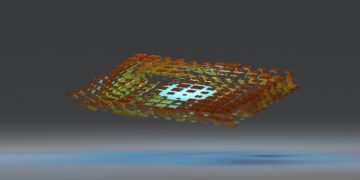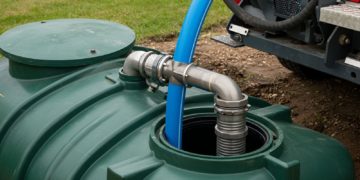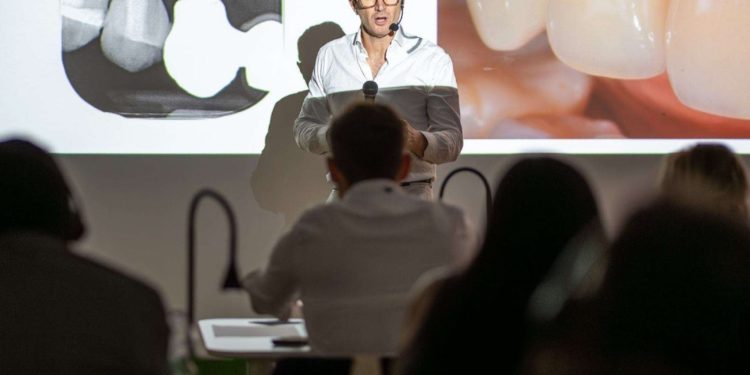Bone regeneration is one of the cornerstones of modern implant dentistry. As clinicians, we know that successful implant therapy begins with adequate bone volume and architecture. Yet, bone deficiencies remain a frequent challenge, especially after extractions, trauma, or periodontal disease.
This article explores bone regeneration comprehensively — from biological principles and regenerative materials to surgical techniques and clinical protocols. It aims to provide dentists with an evidence-based, practice-oriented overview that enhances their ability to plan and execute predictable regenerative treatments.
What Is Bone Regeneration in Dentistry?
Bone regeneration refers to the biological process of restoring lost or deficient alveolar bone to enable implant placement or improve aesthetics and function.
Unlike simple bone filling, regeneration implies new bone formation rather than mere replacement with graft material.
Clinically, bone regeneration can be achieved through techniques such as:
- GBR (Guided Bone Regeneration) using membranes to exclude soft-tissue cells.
- Block grafts harvested from intraoral or extraoral donor sites.
- Bone substitutes and growth factors to stimulate osteogenesis.
The concept is rooted in tissue biology — creating the right environment where osteogenic cells can populate the defect, protected by a barrier and supported by a stable scaffold.
🔹 Explore Your Dental Future’s Masterclass on Bone Regeneration.
Why Bone Regeneration Is Essential for Implant Success
Implant stability depends on the quantity and quality of available bone. When bone volume is insufficient, the implant may fail to achieve proper integration or aesthetics. Bone regeneration solves this by rebuilding the lost foundation before or during implant placement.
Key reasons to regenerate bone include:
- Anatomical limitations (e.g. post-extraction resorption, sinus pneumatization).
- Preservation of ridge contour for prosthetic aesthetics.
- Enhancement of long-term implant success rates.
Regeneration is not optional — it’s a prerequisite for prosthetically driven implantology. By planning regenerative procedures in advance, dentists ensure the long-term function and appearance of their restorations.
🔹 Learn how our courses can help you achieve predictable bone regeneration.
How Bone Regeneration Works: The Biological Principles
Successful bone regeneration depends on the four biological pillars of healing:
- Osteogenesis – living cells form new bone directly.
- Osteoinduction – growth factors stimulate stem cells to differentiate into osteoblasts.
- Osteoconduction – the graft material acts as a scaffold for bone growth.
- Stability and space maintenance – essential to prevent soft-tissue collapse into the defect.
A stable environment, free from micromotion and bacterial contamination, is critical. Vascularisation provides oxygen and nutrients for new bone deposition, while the membrane maintains the regenerative compartment.
Understanding these principles allows clinicians to select the correct biomaterials and techniques for each case, maximising predictability.
🔹 Read more about the biological foundations of bone regeneration in our training programmes.
What Are the Main Techniques for Bone Regeneration?
The choice of technique depends on defect morphology, bone availability, and surgical objectives.
Most common approaches include:
- Guided Bone Regeneration (GBR): using membranes (resorbable or non-resorbable) with particulate grafts to rebuild horizontal or vertical defects.
- Autogenous Block Grafts: harvesting cortical blocks from intraoral sites (e.g. mandibular ramus, symphysis) for significant volume reconstruction.
- Split Ridge (or Ridge Expansion): widening narrow ridges with osteotomes or piezosurgery.
- Sinus Lift Procedures: increasing bone height in posterior maxilla via lateral or crestal approach.
- Socket Preservation: maintaining alveolar ridge immediately after extraction to avoid resorption.
Each technique requires careful case selection and an understanding of biological limits. Predictability improves when clinicians combine 3D planning with precise surgical execution.
🔹 Join our Regenerative Surgery Masterclass to master these techniques.
Which Materials Are Used in Bone Regeneration?
Material selection is a cornerstone of predictable outcomes. Each biomaterial offers unique biological behaviour:
- Autogenous bone – the “gold standard” with osteogenic, osteoinductive, and osteoconductive properties.
- Allografts – human donor bone, biocompatible and resorbable, used when large volumes are required.
- Xenografts – bovine or porcine origin, offering long-term space maintenance.
- Alloplasts – synthetic materials such as β-TCP or hydroxyapatite, ideal for smaller defects.
Barrier membranes (collagen or PTFE) protect the graft, while fixation devices ensure stability.
The combination of materials depends on defect type, biological requirements, and surgeon preference — all aspects covered in Your Dental Future’s regenerative protocols.
🔹 Learn material selection criteria in our Bone Regeneration Masterclass.
Can Bone Regeneration and Implant Placement Be Performed Simultaneously?
Yes — but only in well-selected cases.
Simultaneous implant placement is possible when primary stability can be achieved, and the bone defect is limited. In extensive deficiencies, a staged approach (regeneration first, implant later) ensures higher predictability.
Factors to consider include:
- Defect morphology (contained vs non-contained).
- Bone quality and residual height.
- Type of graft material used.
- The degree of implant exposure expected.
For partial dehiscences or fenestrations, simultaneous placement with GBR is effective. For vertical or combined defects, staged regeneration remains the gold standard. Clinical judgment — not technology — determines success.
🔹 Discover our digital planning protocols for combined regeneration and implant placement.
What Are the Common Complications and How to Prevent Them?
Even with precise protocols, complications can occur.
The most frequent include:
- Membrane exposure leading to infection or graft resorption.
- Graft mobility due to inadequate fixation.
- Soft-tissue dehiscence or tension on flap closure.
- Over-contouring causing poor aesthetic outcomes.
Prevention strategies:
- Ensure tension-free primary closure and flap release.
- Rigidly fixate grafts and membranes.
- Minimise surgical trauma and maintain aseptic conditions.
- Schedule close postoperative monitoring.
A meticulous approach and adherence to biological principles are the best safeguards against complications.
🔹 Refine your regenerative techniques with our advanced training modules.
How Digital Technology Enhances Bone Regeneration
Digital dentistry has revolutionised regenerative planning.
By integrating CBCT data with intraoral scans, clinicians can visualise defects in 3D, simulate graft volumes, and design custom titanium meshes or patient-specific grafts.
Digital planning ensures:
- Accurate volume estimation.
- Optimised flap design and incision planning.
- Precise adaptation of regenerative materials.
CAD/CAM technology also allows fabrication of custom barriers that improve graft stability and healing.
This synergy between digital tools and surgical expertise defines the future of predictable bone regeneration.
🔹 Explore digital bone regeneration techniques at Your Dental Future.
Why Continuous Education Matters in Bone Regeneration
Bone regeneration is a dynamic field — new biomaterials, membranes, and biologics emerge every year. Continuous education helps clinicians stay current with scientific evidence and refine their clinical decision-making.
By attending advanced training, dentists gain:
- Deeper understanding of biological principles.
- Exposure to various clinical cases and solutions.
- Skills to manage complications effectively.
At Your Dental Future, courses are designed to balance theory, surgery, and case-based learning — ensuring participants can immediately apply their new skills to clinical practice.
🔹 Continue your professional growth with our Regenerative Dentistry curriculum.
Conclusion on Bone Regeneration
Bone regeneration remains one of the most powerful tools in implant dentistry. When performed with proper understanding of biology, materials, and technique, it transforms complex cases into predictable successes.
Mastering regenerative procedures allows clinicians to expand treatment possibilities, deliver optimal aesthetics, and ensure long-term stability for their patients.
At Your Dental Future, we provide advanced, evidence-based education that empowers dentists to perform bone regeneration with precision, confidence, and consistency.
👉 Contact Your Dental Future to learn more about our Bone Regeneration and Advanced Surgical Training Programmes. https://yourdentalfuture.com/en/












































































